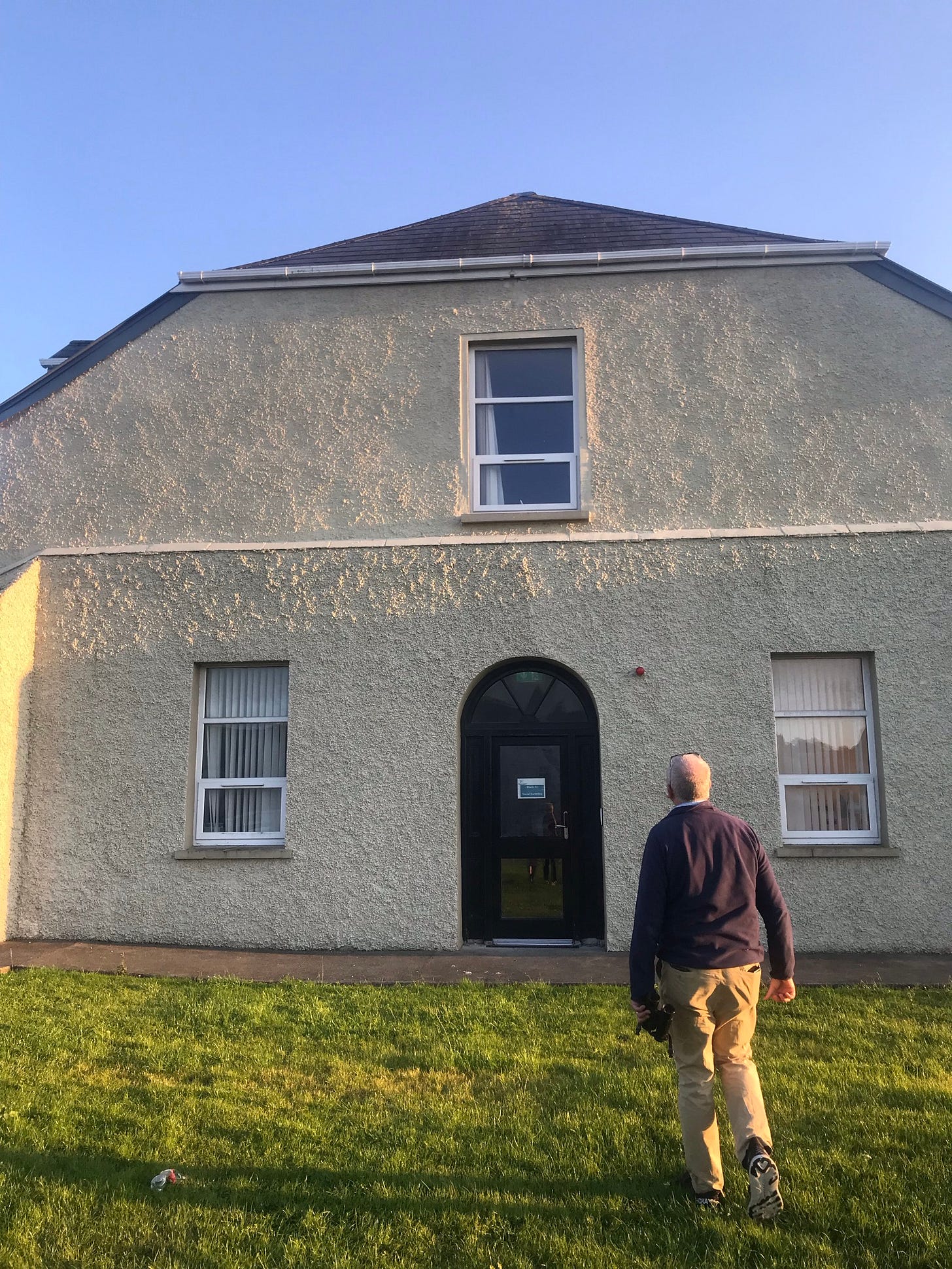Under a swift-filled summer sky
St. Finbarr's Hospital has 12 new nest boxes for a bird that has long been coming to nest in the hospital grounds.
There are two types of people in the world: those who look up, and those who look elsewhere. Noel Linehan is definitely in the former camp.
This day last week, just shy of 9 o’clock in the evening, I took my two boys to St. Finbarr’s Hospital, where Noel, originally from Ballyphehane, was waiting, seated on a bench, looking upwards, as he is want to do.
On our route down to the back field where Noel was waiting, we passed the blood bank. The last time I was on the grounds of St. Finbarr's was with my parents, both blood donors. My mother has a rare type of blood, always in high demand. My father has donated so much over the years that he was awarded a pelican pin. As kids, we used to accompany them for the free crisps and chocolates the staff provided.
Now with my own kids, we were visiting for a different reason: to see the dozen swift boxes that have been mounted on one of the many buildings on the grounds of the hospital. Four boxes were mounted in the spring, and the remaining eight were mounted last week


We joined Noel to watch the swifts and perchance to see one of them fly into the newly installed boxes.
Swifts famously spend most of their lives on the wing, and that evening in the sky over St. Finbarr's, they were out in force, ducking, diving, swooping, soaring, gliding. That’s one of the things about swifts; they make you reach for an arsenal of verbs to describe their flight pattern.
In contrast, the battalion of swallows that darted back and forth in the evening sky danced and fluttered. In only a few minutes, the boys and I, new to the birdwatcher kin, were noticing the differences between the two species of birds. The swift has a much longer wingspan compared with the swallow, and they flutter a lot less too.
Soon enough, both the swift and the swallow would be returning whence they came from, a mammoth journey that would take them down through Europe, across the Mediterranean, and onwards to the Horn of Africa.
Noel smiled, looking up at the sky: the number of swifts was definitely greater than that of the previous summer. Ultimately, Noel’s hoping that through nest boxes such as the ones in the hospital ground, the under-threat bird will find a way through a crisis that has seen its numbers plummet.
Swifts have long been nesting in and around St. Finbarr’s. In fact, Noel showed us one of their nesting sites, tucked inside the fascia of a building close by to the nesting boxes. Their affinity for the hospital ground is why Noel cold-called the hospital one day in the summer of last year.
He eventually got through to a head nurse and pitched his case: would the hospital be interested in installing swift boxes?
As Noel said, she must have thought he was a bit mad, but Noel has made versions of the swift call more than once, and he’s informative without being pushy. He followed the phone call up with a letter as he explained his case. It paid off with the installation of 12 swift boxes and a lure, an audio component that plays a swift “call” to attract the birds into the boxes. (Gas Networks Ireland funds the swift boxes. You can hear Noel and the “lure” in the video above by pressing play.)
Together, we stole up the grassy knoll to listen to the lure. The swifts above us had certainly heard it. While we watched and observed them as the evening closed in, they darted precipitously close to the boxes


“They’re coming,” Noel said, excitement in his voice, convinced that they would make themselves a home and ultimately a family in the boxes. Perhaps not this year, but maybe next year.
“They definitely know about these nests,” he said.
Just about half an hour after we arrived, the event that the boys, Noel, and Rod Hoare, the head of maintenance at St. Finbarr’s who had joined us, were waiting for, happened. And it was all over in the blink of an eye.
A single swift darted down from a height, raced to the opening under the fascia, and disappeared inside to its nest. All that was left was the excitement of witnessing that magical moment.
And perhaps, next year, a new pair will be ready to make a new home in one of the next boxes on the grounds of an old and welcoming hospital.
How to spot a swift:
The swift, similar in size to a swallow but with dark plumage, is a highly aerial bird with weak feet that only allow it to cling to vertical surfaces or shuffle on the ground, and is distinguished by its scythe-shaped wings held straight out from the body, making it one of the fastest flying birds in Ireland. It emits a high-pitched "srrrriii" scream, often given by pairs in high speed chases.
To learn more about the swift including information about building a swift nest box visit Swift Conservation Ireland. Contact details for swift experts can be found at Swift Conservation Ireland.
Bird Watch Ireland also has information about identifying swifts as well as conservation efforts.
Swift action needed
The 10 small holes stacked in a triangular pattern high up on the gable end of the wall of the new parochial hall at Scoil Abán Naofa, Ballyvourney, are so unobtrusive that to most people, they might as well not exist. However, this small but significant intervention in the new building could make all the difference in establish…







